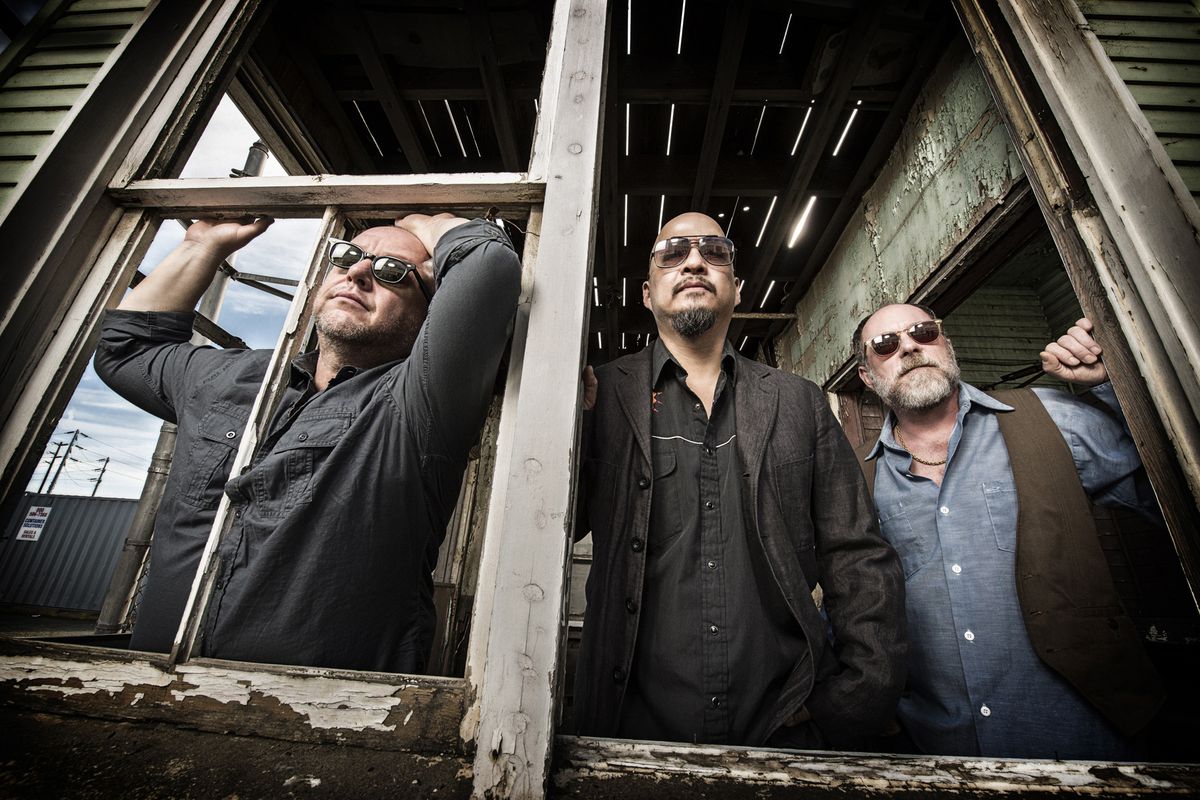Pioneering Pixies
Edgy alt rockers changed the landscape of post-’80s music with songs that still stand up

I was obsessed with the Pixies as a teenager. And I mean, really obsessed, as in no-other-bands-matter obsessed.
I still vividly remember putting on their 1989 masterpiece “Doolittle” for the first time – hearing Kim Deal’s surf pop bass line on the album opener “Debaser” merge with Joey Santiago’s glossy, glassy guitar, only to be sliced up like so many eyeballs by lead singer Black Francis’ yipping and yowling. It was love at first spin.
The Pixies’ first four LPs were released between 1988 and 1991, and yet the music exists outside any conceivable genre or era: You could release any of those albums today, and it would still sound fresh, exciting, deeply strange and unclassifiable. Everyone from Nirvana to Weezer has cribbed from the Pixies, and everyone from Bono to David Bowie has expressed admiration.
But the Pixies’ massive influence on post-’80s rock wasn’t recognized while they were first around, and it wouldn’t be until the years following their 1993 breakup that everyone finally got wise. In fact, it seems that the Pixies themselves didn’t realize they were icons until their first reunion tour 10 years ago.
“I had no clue whatsoever,” drummer David Lovering said during a recent phone interview. “It wasn’t until we did Coachella, which was in 2004, that it became apparent to me right there and then. We came out and there was this sea of people, and they were all kids that weren’t even born when we were around. Yet they knew and sang along with every single song, and it was a surreal experience. And it has been that way ever since.”
The Pixies (now minus Deal, who’s focusing on her band the Breeders) haven’t been through Spokane since that original reunion tour – that was back when the Knitting Factory was the Big Easy – and they’re currently on the road in support of “Indie Cindy,” their first album of original material in 23 years.
However you feel about those new songs (and the reviews have been all over the map), don’t fret: Lovering, who actually writes all the set lists, assures that the band’s live shows are mostly comprised of the classics – “Here Comes Your Man,” “Caribou,” “Hey,” “Vamos,” “Monkey Gone to Heaven,” “Where Is My Mind?”
“The new songs have been working very well and disappearing within the classic set,” Lovering said. “I think we’re very fortunate to be pulling it off.”
Lovering says there was initially some trepidation about the band returning to the studio – after all, how can you possibly recapture the visceral impact of those early recordings, and should you even bother trying? But the three remaining members worked on “Indie Cindy” off and on for a year and a half, finessing the songs until they were satisfied, an experience far removed from the recording sessions of their heyday. (By comparison, the Pixies’ first full-length album, 1988’s “Surfer Rosa,” took only 10 days to complete.)
“When we were much younger, we honed these songs in clubs and learned to work them like that,” Lovering said. “We didn’t get that opportunity with each new album because of how hectic we were with touring. … But this time, with ‘Indie Cindy,’ I had a lot of time to learn the songs and make them my own. When you don’t have something and you get to do it again after a long time, you cherish it. It was a joy to do.”
Most of the new material follows the same blueprint as the old stuff – the loud-quiet-loud dynamics Kurt Cobain famously treated as gospel. It’s melodic surf rock with jagged punk edges, and Francis (otherwise known as Frank Black but whose real name is Charles Thompson) still sounds like a man possessed, sweetly serenading you one moment and then maniacally barking at you the next.
The album is generally less abrasive and confrontational than much of the Pixies’ output – Francis is, after all, the guy whose most accessible songs were secretly about incest, drugs and biblical violence – but it sounds like the logical progression from the Pixies’ last record, 1991’s unfairly overlooked “Trompe Le Monde.”
“In actuality, it is the album after ‘Trompe Le Monde,’ ” Lovering said of “Indie Cindy.” “Even though there’s a 20-year gap, it still would have been the next album that came after ‘Trompe Le Monde,’ if I put it back in time or something like that.”
So why have the Pixies endured? When so many bands from their era have either disappeared or lost their edge, the Pixies continue to sell out theaters and enthrall new fans, some of whom are no doubt listening to “Doolittle” for the first time right now and having their minds blown. Lovering says the answer is simple: The music still holds up.
“The only reason for it is that the songs are good,” he said. “They’re good songs, and they’re somewhat different in a way. I don’t think it’s our image or anything like that. That’s just the way we sounded, and we’re very lucky that it still stands up.”